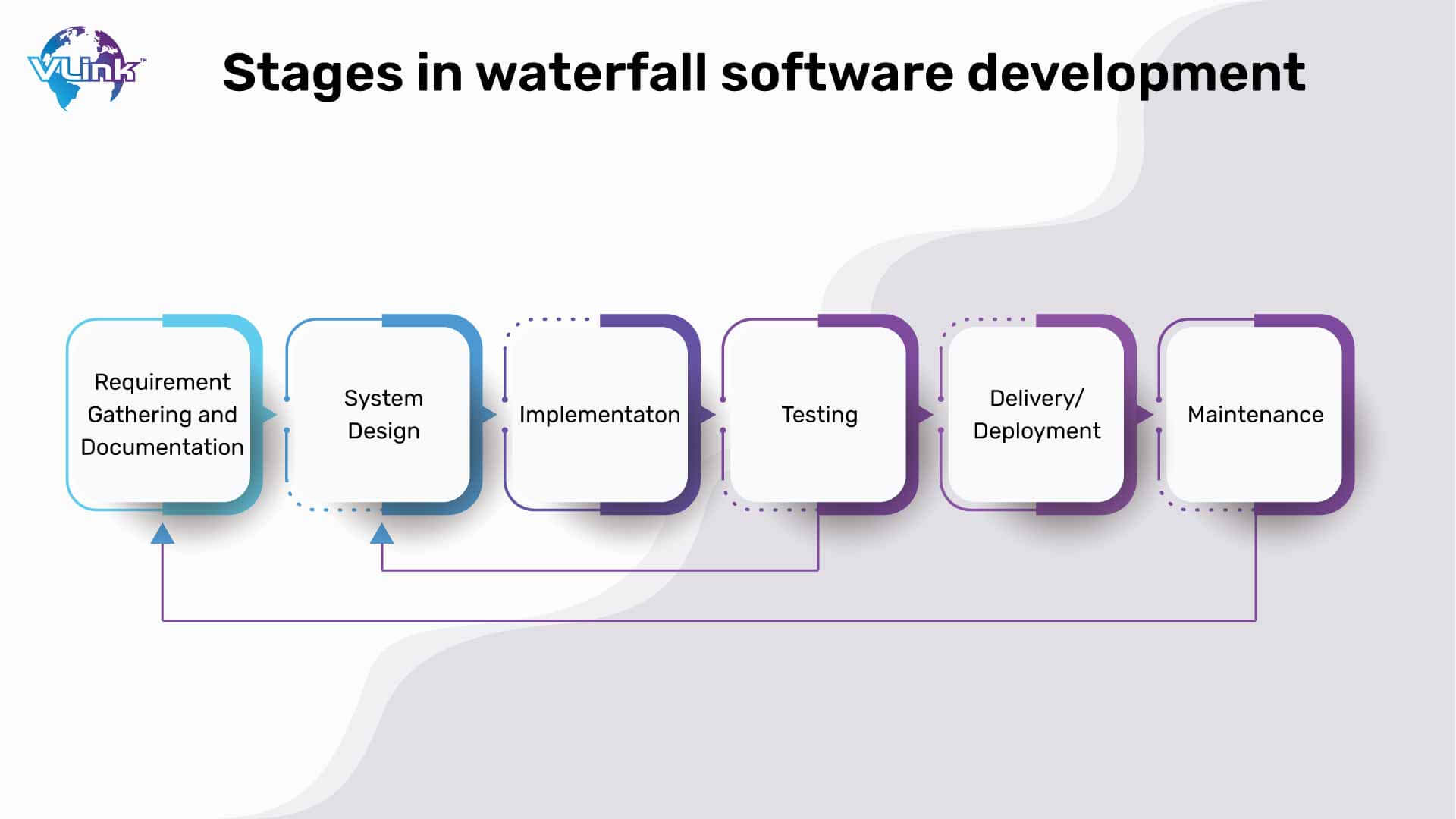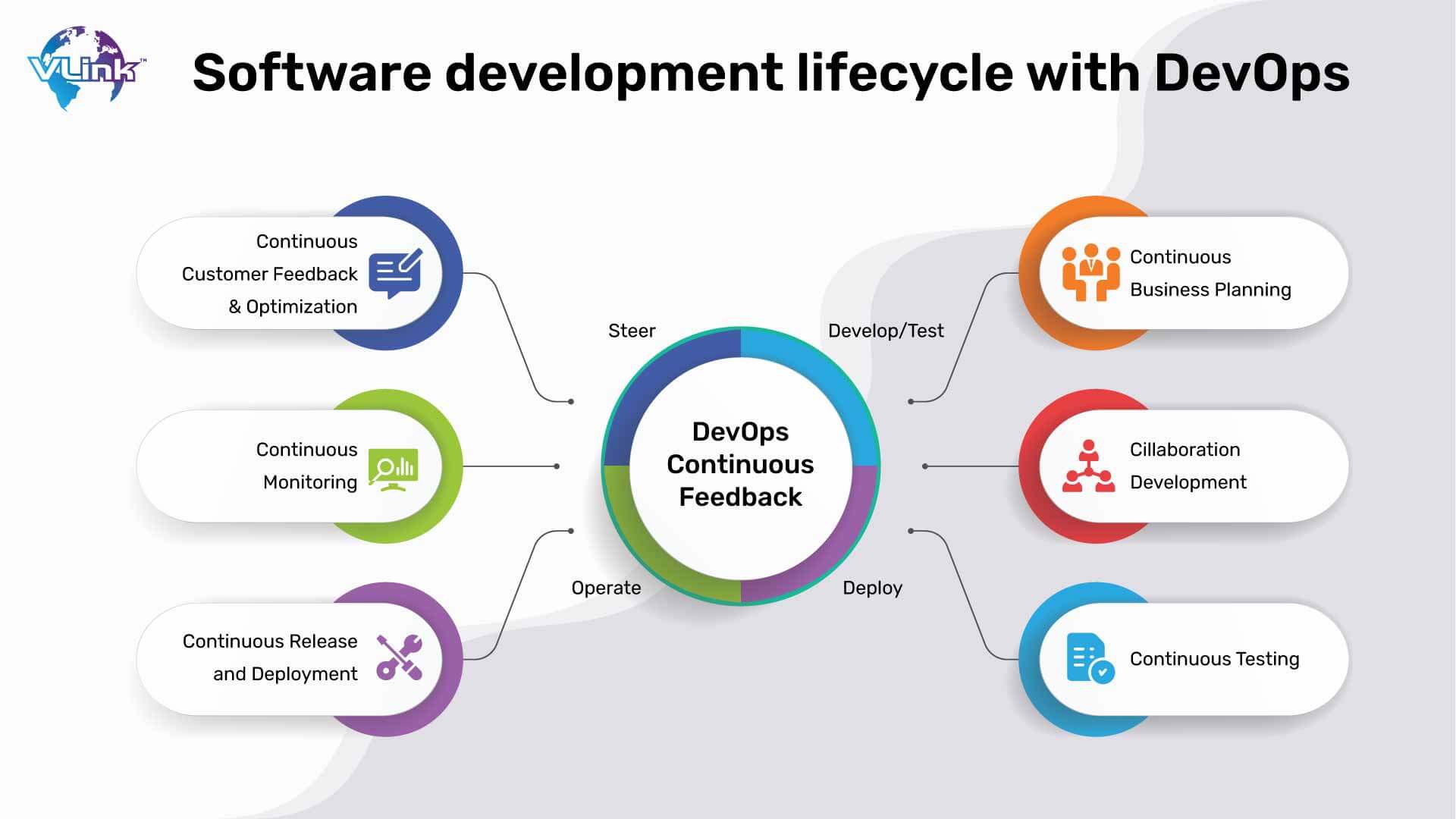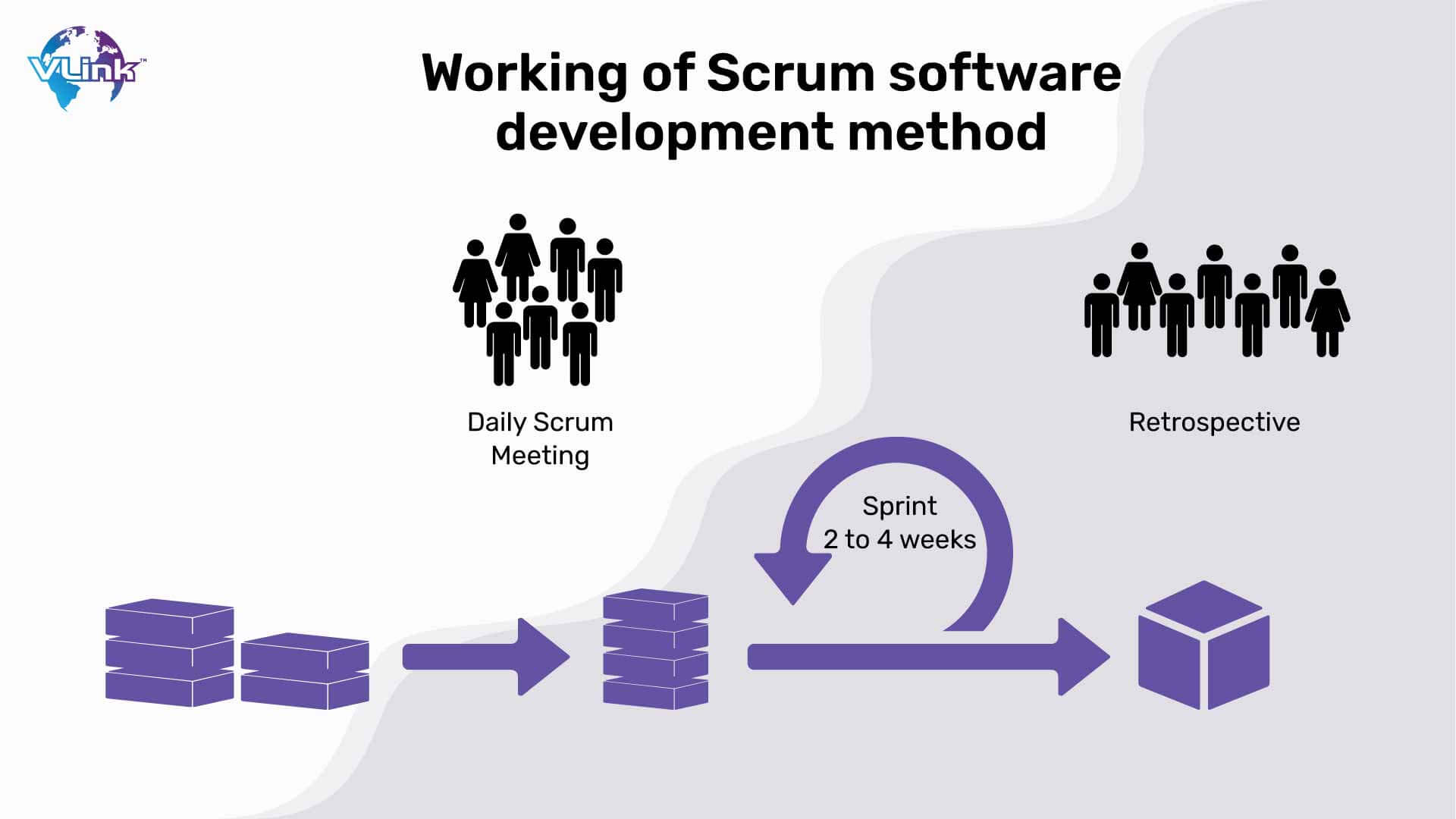As the digitization of our world accelerates, more and more organizations are focusing on developing scalable and feature-rich software that can meet client and organizational concerns. In addition, businesses who seek to build their customized software applications expect to have budget-friendly, scalable, and qualitative services from tech companies.
To reach such an objective, proper planning and management of the development process using the appropriate approach is required. There are several software development processes that suggest various approaches to achieving the desired outcome at a reasonable cost and in a short period of time.
These approaches establish the framework for organizing, regulating, and growing information systems. This blog tells you all about the most utilized software development methodologies across the globe along with their benefits and disadvantages.
What Is a Software Development Methodology?
The software development methodology refers to the SDLC (software development life cycle) model, which is focused on managing useful but effective project development procedures from concept and planning to front-back and back-end development, testing, and product launch.
The key purposes of employing the latest and most effective software development methodology are:
- Streamlining the workflow/process flow effectively
- Filling the time gaps during each phase
- Minimizes the overall expense in project handling & management
- Tracking the progress and scopes of optimization
- Optimizing the interaction between teams at various instances
- Deploys quality codebase with improved functionality
The purpose of utilizing the latest software development methodology resolves several aspects, not just for tech companies but also for dedicated developers who work on complex projects.
Top 7 software development methodologies
1- Agile Development Methodology
In recent years, agile methodology has probably become one of the most popular software development approaches. It follows a linear strategy rather than a standard approach. Instead of stressing paperwork and inflexible procedures, Agile focuses on how to satisfy consumers.

Agile divides projects into tiny sprints that take 1 to 4 weeks to complete. It is an iterative paradigm with various tests as development proceeds. Developers constantly solicit client input and make updates to the program.
Pros
- Because of recurrent testing and fine-tuning, software has very few flaws.
- Clarity among team members throughout development because of regular and transparent development.
- Changes in project needs are readily handled and implemented with minimal disruption to the timeframe.
- Improved quality of final product and other deliverables.
Cons
- Overwhelming modification requests might cause the team to lose focus.
- Documentation takes a back place in Agile, which might cause issues later in the development process.
- Agile emphasizes conversations and feedback, which may be time-consuming for teams.
- Agile demands skilled developers who can work autonomously due to its non-structured style.
Agile method for enterprise software development is appropriate for projects with rapidly changing needs. If you're developing software in a new market, you should adopt Agile. It is important to integrate more ideas as you learn more about market requirements.
Of course, this requires that your development staff is highly autonomous and at ease working in a fast-paced, unstructured atmosphere.
2- Waterfall Development Methodology
Despite being utilized for several years, the waterfall technique is still employed in some projects today. This method is standardized as linear approach, in which development phases goes in a straight line and organized in a simplistic manner.
It is relatively easy to understand the waterfall development process so that developers and companies can create products with little or no expertise. All phases must be completed before we proceed to the next step. For example, all the criteria have to be defined before construction can start.

There is no turning back in this method, just as there is no turning back in a waterfall. As waterfall comes with rigidity, you should not use it for software development projects that have iterative changes according to the requirements.
Pros
- The waterfall model's linearity makes it simple to grasp, especially for rookie developers.
- Before development begins, all specifications and deliverables are laid down.
- The waterfall paradigm eliminates the possibility of information miscommunication since each stage is explicitly defined.
Cons
- It does not incorporate user feedback in the early stages, which raises the chance of the project deviating from its intended path.
- Testing is only done at the conclusion of the development process, and there might be issues that should be resolved at the same instance.
- The waterfall model's rigidity leaves no flexibility for adjustment, making it inappropriate for big projects.
- The team may devote too much time producing documentation rather than providing solutions that answer the user's problems.
Use the waterfall method only when you have a well-defined project scope. This software development process is unsuitable for projects with numerous unknowns. Waterfall is best suited for projects with predictable outcomes and teams of new developers.
3- Lean Development
Toyota's lean manufacturing concepts inspired the method of lean development for many companies. It aims to reduce waste while improving production. Using the guiding principles, developers may avoid non-productive activities while producing high-quality results.
The Toyota-inspired software development method also prioritizes continual learning and decision deferral. It enables teams to have an open mind during the development phase and consider all considerations before making a choice.

Developers are responsible for identifying bottlenecks that might stymie the process using the lean technique. The objective is to create an efficient system that operates perfectly. The model also stresses human respect; therefore, communication is essential for improving team cooperation.
Pros
- Reduces project waste such as superfluous code, unneeded documentation, and repetitive activities.
- The lean principles minimize the total cost of software development.
- Because lean development enhances efficiency, the time to market for the program is reduced.
- Team members' motivation will increase as they get greater decision-making authority.
Cons
- You need a team of highly skilled developers to be effective in lean development, it's not easy to get them together.
- Less-experienced developers may become overwhelmed by their obligations and lose focus on the project.
- Detailed documentation is required, putting a significant strain on the business analyst.
The Lean software development technique requires developers to detect bottlenecks that might stymie the process. Its ideas of avoiding waste and boosting efficiency mean you'll be able to achieve incredible achievements with a little workforce. Lean development becomes less practicable for larger projects since it requires a larger staff to complete the tasks.
4- Prototype Model
Instead of creating a full-fledged software, the prototype approach allows developers to work on the ultimate product's prototype version. After that, the prototype is made accessible to customers for testing, assessment, and feedback.
The prototype is refined multiple times based on the input received until it is judged suitable by the customer. The prototype approach's value stems from its rigorous review, which identifies potential flaws before actual production begins.

The success of this technique is dependent not just on the development team, but also on how well they interact with the clients during the test. It's also worth noting that the expense of constructing the prototype is frequently borne by the creators.
Pros
- Good in resolving possible concerns early in the development process, which considerably decreases the likelihood of product failure.
- Ensures that the customer is satisfied with the 'product' before beginning actual development work.
- Early in the conversations, establish rapport with the customer, which will aid throughout the project.
- With the prototype, gather specific information that will be needed to construct the final version.
Cons
- Testing becomes hectic with excessive processing, which might cause delay in deliverables
- Customers' expectations of the final product may differ from the prototype.
- Cost overruns are possible since prototype work is frequently paid for by the developer.
When developing software with numerous unknowns, the Prototype software development process is excellent. Consider an online platform with high user involvement. The prototype process allows you to discover what works best with people while lowering the risk of building the actual product.
5- DevOps methodology
DevOps facilitates the collaboration between software development and IT operations. Normally, these two teams operate in silos, but this technique enables them to cooperate and support project implementation from the design phase through product delivery.

DevOps and automation, when automation enable effective communication between teams and lays the groundwork for designing, testing, and delivering software in less time. It guarantees better results and enables continuous product supply.
Pros
- Working on project activities concurrently by both teams speeds up software delivery.
- While continuous delivery is a component of DevOps services, it enables a firm to develop and upgrade products as needed.
Cons
- Compatibility difficulties and more complicated infrastructure may arise in a cloud-based production environment.
- The strategy necessitates a positive mentality among all teams.
Statista’s report said that one out of three projects are being handled with DevOps software development method. And the graph is still going up with most software development companies preferring to attain it at the fullest.
6- Scrum Development
Scrum software development method is utilized across the globe due to its versatility towards change in requirements and scalability of project. It is founded on the Agile principle and is well-known for its incremental and iterative techniques. The Product Owner, Scrum Master, and Development Team are all part of the Scrum process.
The product owner collects customer feedback and ensures that the team is on track to meet the client's expectations. Meanwhile, the Scrum Master serves as a facilitator, ensuring that team members are comfortable with the Scrum methodology.

The way tasks are completed in sprints is what makes Scrum an effective software development technique for a fast-paced setting. Each sprint might last up to 4 weeks. The rapid execution enables teams to discover issues, offer solutions, test, and get feedback in a short amount of time. It makes dealing with fast-paced tasks much simpler.
Pros
- Short iterations enable rapid issue solving.
- Scrum is particularly adaptable to changes since the method incorporates constant feedback.
- Scrum is both cost-effective and time efficient.
- Regular meetings keep team members on the same page.
- Individual members' contributions are recognized and praised during Scrum meetings.
Cons
- Scrum work requires all team members to be equally talented and committed.
- Team members may find the daily Scrum meetings exhausting.
- If there is no strong deadline management, the time to market may grow.
- Large projects are not appropriate.
The best time to utilize Scrum methodology for software development is when you have ambiguous requirements along with random changes. For example, you may need to build an MVP rapidly and test it with people. Keep in mind that Scrum is only effective if everyone involved is totally committed.
7- Feature Driven Development
FDD, or Feature Driven Development, is an Agile software development process. Its purpose is simple: to avoid misunderstanding, which leads to costly rework. FDD is commonly misunderstood as focused on each of the program aspects. It is not.
Feature Driven Development breaks down development operations into a feature list on the overall model. Developers go through iterations of planning, designing, and building for each feature.
A feature should usually take no more than two weeks to complete. FDD produces rapid, significant outcomes for each of the tasks listed as characteristics. This strategy is intended for big teams, and knowledge is provided through thorough documentation.
Pros
- Breaks down complex operations into smaller actions, increasing efficiency.
- Allow huge groups to work on several things at the same time.
- Predictable success is achieved by adhering to set standards and best practices.
Cons
- Not appropriate for medium-sized or small-sized projects.
- The lead developer is extremely important since he or she is in charge of organizing work among members.
- Because the model is driven by actions, it might occasionally depart from offering value to end users.
Larger teams working on complicated projects benefit most from Feature Driven Development. It combines the greatest features of an iterative framework with a more organized approach. Ideally, you should have a capable lead developer in charge of FDD.
VLink’s approach towards latest software development methodologies
According to industry experience, all software development approaches work better with project categories. Different levels of expertise and experience in the method of choice will be required for different sorts of complexity.
Given that no approach is flawless, developers must carefully weigh all the advantages and disadvantages. Budget, project scope, available resources, time, and personal preferences are all important considerations.
VLink has always been a pioneer in software development, employing the most effective engineering methodologies in a variety of projects.
Contact us right now to discuss your software project. We will walk you through your bespoke software development journey and will use the development approach that best fits your needs.








 Shivisha Patel
Shivisha Patel

















